|
Tin Whiskering |
|||
|
Experiments, 2008/08/03
Based on the evidence of whisker growth relegated to the tin filled
mechanical interface for the ring lugs shown below, I have begun an
investigation into the actual mechanism of whisker growth from pure metal
coatings. |
|||
|
Images
|
|||
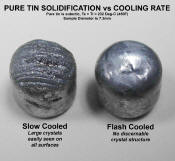 1. Crystal growth |
|||
| Whisker Examples from My Inventory | |||
| The images below are from a pure tin plated
copper lug from a bag of about 50 lugs that have been there for several
years. While all the lugs had whiskers; 75% had whiskers around 500
microns long, 20% had whiskers around 1000 microns long and 5% had
whiskers up to 3000 microns long than went more than half way across the
barrel. No whiskers were noted on any of the parts anywhere but over
the internal seam: For the exposed surfaces outside the barrel this
could be due to mechanical breaking of forming whiskers when contacting
other parts in the bag, this could not be the case for the non-seam
surface within the barrel. Pulling apart the barrel seam, the inclusion of air pockets in the tin plating within the seam indicates the parts were dip-plated, as opposed to electro-plated. |
|||
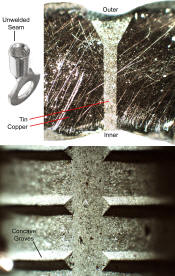 |
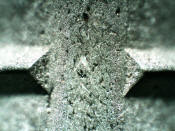 |
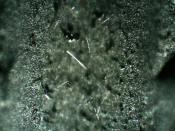 |
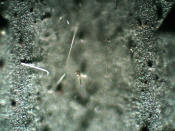 |
|
External Image Collection |
|||
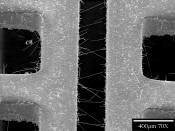 |
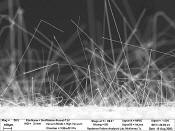 |
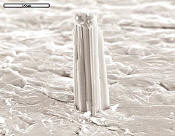 |
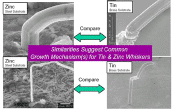 |
|
Technical Documents |
|||
| Alert | Anecdote | Gold Whiskers | Mitigation |
| Mitigation | Risks | Tin Commandments | |
|
External Links |
|||
| ACI | CALCE | EMPF | NASA |
| NEMI | NIST | SolderTec | |